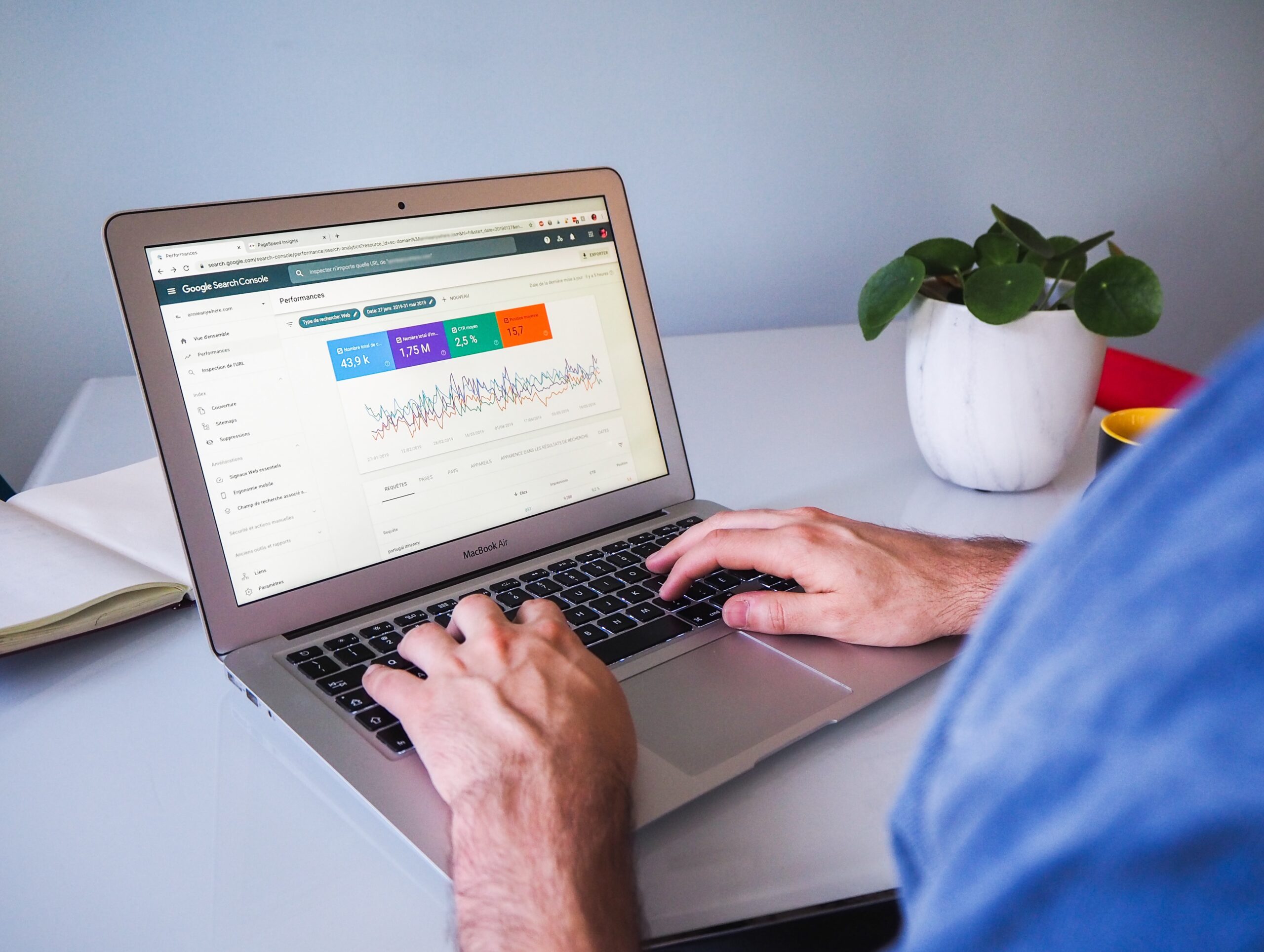How To Optimize Your Website For Core Web Vitals And Page Experience?
If you want your website to rank high on search engines and provide a seamless user experience for your visitors, optimizing for core web vitals and page experience is essential. By improving loading speed, interactivity, and visual stability, you can ensure that users stay engaged and satisfied with your website. In this article, we will explore effective strategies and techniques to optimize your website for core web vitals and enhance the overall page experience, helping you attract more traffic and boost your online presence. So, let’s dive in and discover how to make your website a top-performer in the digital world!

Understanding Core Web Vitals
What are Core Web Vitals?
Core Web Vitals are a set of specific website performance metrics that Google uses to measure the user experience on a website. These metrics focus on three key aspects: loading, interactivity, and visual stability. The Core Web Vitals include Largest Contentful Paint (LCP), First Input Delay (FID), and Cumulative Layout Shift (CLS). By understanding and improving these metrics, website owners can enhance the overall user experience and potentially achieve better search engine rankings.
Why are Core Web Vitals important?
Core Web Vitals are important because they provide valuable insights into how well a website performs for its users. Google has announced that starting from May 2021, Core Web Vitals will be considered as ranking signals for its search algorithm. This means that websites with better Core Web Vitals scores may have a higher chance of ranking higher in search results. Additionally, a good user experience leads to improved user satisfaction, engagement, and conversions on a website.
How are Core Web Vitals measured?
Core Web Vitals are measured using real user data collected by Google’s Chrome User Experience Report (CrUX). This data is based on actual user interactions with websites across the web. These interactions are used to calculate various metrics for each Core Web Vital. Website owners can check their Core Web Vitals scores using Google’s tools such as PageSpeed Insights, Lighthouse, or the Search Console’s Core Web Vitals report. These tools provide detailed information about each metric and suggestions for improvement.
Analyzing Current Website Performance
Evaluating Core Web Vitals metrics
To analyze the current performance of your website’s Core Web Vitals, you can use various tools provided by Google. These tools will provide you with insights into the LCP, FID, and CLS metrics for your website. You can identify the specific URLs on your site that need improvement and focus on optimizing those pages first.
Identifying areas for improvement
Once you have evaluated the Core Web Vitals metrics for your website, it’s important to identify the areas that need improvement. Look for pages with high LCP times, long FID delays, or significant layout shifts. These are the areas that may have the most significant impact on the overall user experience. By addressing these issues, you can enhance your website’s performance and user satisfaction.
Improving Largest Contentful Paint (LCP)
Optimizing server response times
One way to improve the Largest Contentful Paint (LCP) metric is by optimizing your server response times. Ensure that your web server is properly configured and able to handle incoming requests efficiently. Consider utilizing content delivery networks (CDNs) to deliver your website’s content faster to users across different geographical locations. Compressing and optimizing your images can also reduce the size of the content being loaded, resulting in faster LCP times.
Reducing render-blocking resources
Render-blocking resources such as JavaScript and CSS files can significantly impact the LCP metric. By minimizing the number of render-blocking resources or deferring their loading, you can improve LCP. Move JavaScript files to the bottom of your HTML document or use techniques such as asynchronous loading or deferred loading. This allows the browser to prioritize rendering the largest content on the page, resulting in a faster LCP.
Lazy loading and code optimization
Lazy loading is a technique that delays the loading of non-critical elements, such as images or videos, until they are actually needed. By implementing lazy loading, you can improve the LCP metric, as the browser only needs to load the essential content initially. Additionally, optimizing your code by minifying and compressing it can reduce the overall file size, improving the LCP time.
Enhancing First Input Delay (FID)
Minimizing JavaScript execution
Excessive JavaScript execution can lead to longer First Input Delay (FID) times. To minimize FID, it’s essential to optimize and reduce the amount of JavaScript code running on your website. Consider removing or deferring unnecessary JavaScript files, especially those that are not required for initial page rendering. Splitting larger JavaScript files into smaller, more manageable chunks can also help improve FID.
Optimizing event handlers
Event handlers, such as click or scroll handlers, can impact the FID metric if they are not optimized. Avoid using JavaScript event handlers that block the main thread and cause delays in user interactions. Instead, use passive event listeners or requestAnimationFrame to handle events more efficiently. By optimizing event handlers, you can reduce the FID and improve the overall responsiveness of your website.
Reducing third-party code impact
Third-party scripts and libraries can contribute to longer FID times. Evaluate the third-party code used on your website and consider removing or minimizing its impact on the FID metric. Utilize asynchronous loading for third-party scripts, so they don’t block the main thread. Additionally, carefully choose reliable and well-optimized third-party tools to minimize their impact on the FID.

Optimizing Cumulative Layout Shift (CLS)
Ensuring element dimensions do not change
Cumulative Layout Shift (CLS) occurs when elements on a webpage change position or size unexpectedly, causing a layout shift for users. To optimize CLS, ensure that element dimensions are explicitly defined in your HTML or CSS code. Avoid relying on dynamic content that can alter the layout and cause shifts. Properly setting the width and height attributes on images and videos can also prevent unexpected jumps in the layout.
Avoiding sudden changes in layout
Minimize sudden changes in the layout of your website to improve the CLS metric. Be cautious when adding or removing elements from the page, as this can result in shifts. Utilize CSS transitions or animations to make changes more visually smooth and less disruptive. Test your website on different devices and browsers to detect and resolve any layout issues that may cause unexpected shifts.
Utilizing proper image and video sizes
Inappropriate image and video sizes can contribute to layout shifts and affect the CLS metric. Always specify the dimensions of images and videos in your HTML or CSS code to allocate the necessary space before the content loads. Use responsive design techniques to ensure that images and videos are appropriately sized for different screen sizes. This can minimize layout shifts and provide a more stable user experience.
Understanding Page Experience
What is Page Experience?
Page Experience refers to the overall user experience while interacting with a webpage. It includes factors such as Core Web Vitals, mobile-friendliness, safe browsing, and more. Google aims to rank websites that provide a positive Page Experience higher in search results, as it reflects their commitment to user satisfaction and engagement.
Elements of Page Experience
Page Experience is composed of various elements, including Core Web Vitals, mobile-friendliness, safe browsing, HTTPS security, and absence of intrusive pop-ups and ads. By focusing on these elements, website owners can improve the overall user experience and potentially achieve higher rankings in search engine results.
Why is Page Experience important?
Page Experience is important because it directly impacts user satisfaction and engagement. When users have a positive experience on a website, they are more likely to stay longer, explore more pages, and ultimately convert into customers or subscribers. Additionally, Google considers Page Experience as a ranking factor, meaning that websites with better overall user experience may have a competitive advantage in search engine rankings.

Improving Mobile Friendliness
Responsive design and layout
Mobile friendliness is crucial for providing a positive user experience on mobile devices. Ensure that your website has a responsive design that adapts to different screen sizes and orientations. Use CSS media queries to adjust the layout, font sizes, and button sizes for optimal viewing on mobile devices. Test your website on various mobile devices to ensure a seamless experience for mobile users.
Optimizing font and button sizes
Text that is too small to read or buttons that are too small to tap can frustrate mobile users. Optimize the font sizes to ensure readability on smaller screens. Similarly, increase the size of buttons and interactive elements to make them easier to tap with fingers. A user-friendly mobile experience increases engagement and reduces bounce rates.
Leveraging mobile-specific features
Take advantage of mobile-specific features to further enhance the mobile experience. For example, utilize GPS functionality to provide location-based services or use push notifications to deliver relevant updates to mobile users. These features can add value and convenience to the mobile experience, making your website more appealing to mobile users.
Prioritizing Safe Browsing
Securing your website with HTTPS
Safe browsing is essential to protect users from potential security threats. Implementing an SSL/TLS certificate on your website enables HTTPS encryption, ensuring that user data is transmitted securely. HTTPS also adds trust and credibility to your website, which can positively impact user confidence and engagement.
Implementing reliable and trusted plugins
If you use plugins or third-party software on your website, ensure they are reputable and regularly updated. Vulnerabilities in plugins can expose your website and users to security risks. Choose plugins from trusted sources, keep them up to date, and remove any unused or unnecessary plugins to minimize potential vulnerabilities.
Scanning for malware and vulnerabilities
Regularly scan your website for malware and vulnerabilities using security tools or plugins. These scans help identify potential threats and vulnerabilities that can affect user safety. Promptly address any identified issues to ensure the safety and trustworthiness of your website.
Enhancing HTTPS Security
Obtaining an SSL/TLS certificate
To enhance HTTPS security, obtain an SSL/TLS certificate from a trusted certificate authority (CA). The certificate will encrypt data transmitted between your website and users, preventing unauthorized access or tampering. There are various types of certificates available, including domain validated (DV), organization validated (OV), and extended validation (EV) certificates. Choose the appropriate certificate based on your website’s needs and level of trust.
Keeping certificates up to date
SSL/TLS certificates have an expiration date, usually ranging from a few months to a few years. To maintain HTTPS security, ensure that your certificates are always up to date by renewing them before they expire. Failure to renew certificates can result in warnings and potential security risks for your website users.
Implementing HTTP Strict Transport Security
HTTP Strict Transport Security (HSTS) is a security policy that instructs the browser to only communicate with the website over HTTPS. This prevents users from accessing your website over an insecure HTTP connection, offering enhanced protection against potential security vulnerabilities. Implementing HSTS adds an additional layer of security to your website.
Promoting Ad and Pop-Up Policy Compliance
Avoiding intrusive ads
Intrusive ads that disrupt the user experience can negatively impact your website’s Page Experience. Avoid implementing ad formats that cover content or make it difficult for users to navigate the site. Choose ad placements that are user-friendly and enhance the overall browsing experience. Balancing the need for ad revenue with a positive user experience is crucial.
Preventing pop-ups that hinder user experience
Pop-ups can be useful for capturing user attention or promoting offers, but when used excessively or inappropriately, they can annoy users and affect the overall page experience. Minimize the use of pop-ups and ensure they do not hinder the user’s ability to access and interact with your content. Consider using alternative methods such as banner notifications or less intrusive overlays to convey important information or offers.
Complying with ad guidelines
Ensure that your website and ads comply with the relevant ad guidelines provided by the advertising networks or platforms you use. Violating these guidelines can lead to penalties or restrictions on your website. Adhering to the guidelines not only promotes a positive user experience but also maintains a good relationship with the advertising networks and platforms.
In conclusion, optimizing your website for Core Web Vitals and Page Experience is crucial for providing a positive user experience, improving search engine rankings, and increasing user engagement. By focusing on metrics such as LCP, FID, and CLS, addressing mobile friendliness and safe browsing, enhancing HTTPS security, and complying with ad and pop-up policies, you can significantly improve your website’s performance and overall user satisfaction. Regularly monitor your website’s performance using Google’s tools and stay up to date with the latest best practices in web optimization to ensure continued improvement in your website’s performance.




